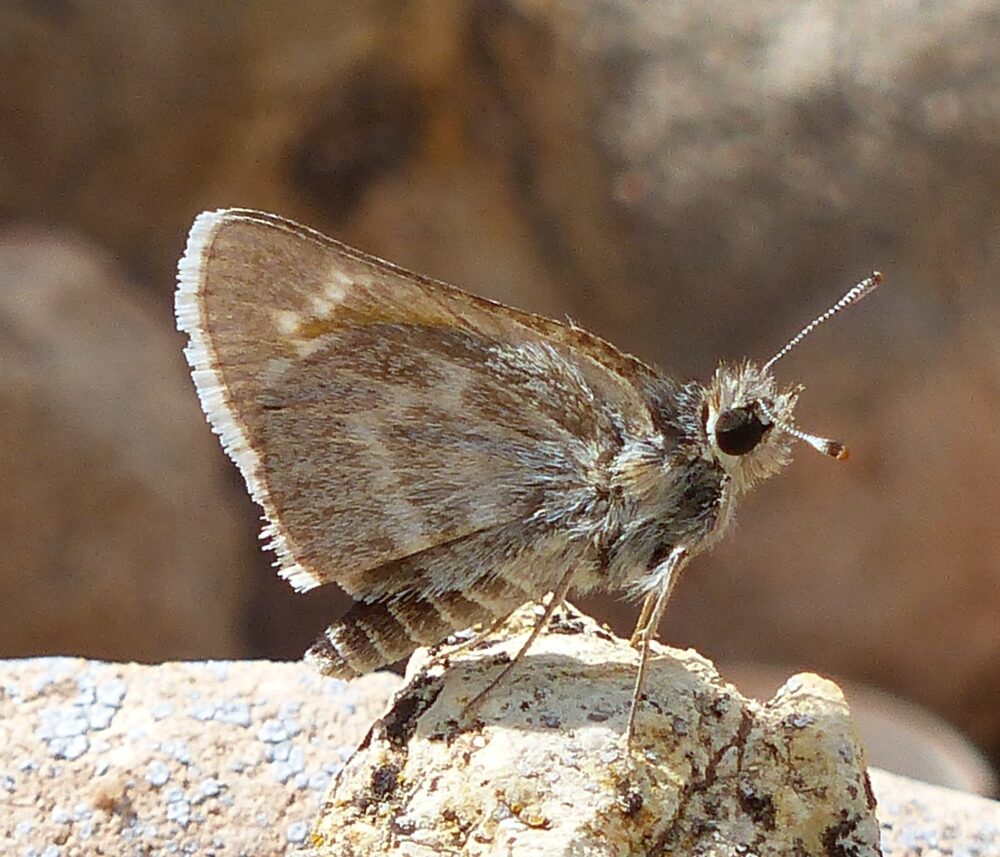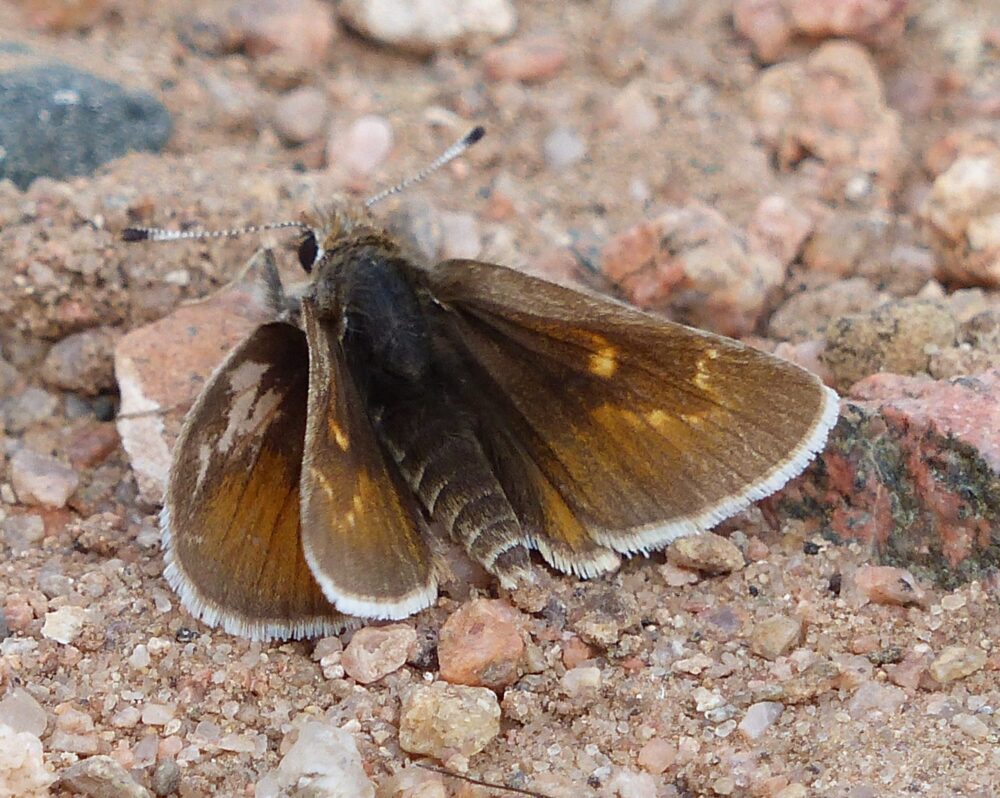Dear New Mexico Butterfly aficionados, fans, students, adherents, gardeners, photographers, wranglers, busters, etc.,
Perhaps it’s how I am dealing with the COVID stay-safe-at-home-forever conundrum, but I am working to get my next book out to the public via the internet. Butterflies of New Mexico will expand on my 2009 Butterfly Landscapes of New Mexico, adding more detailed information, more science, and more photos to flesh out what we know about each of our 300-plus species.
The Pajarito Environmental Education Center (PEEC) has graciously agreed to partner with me on that effort by putting the book up as a page on their website. (Three cheers for PEEC, who you should support!) The book is not ready yet, but it’s getting there, still a few weeks needed to iron out the major wrinkles. It will always be a work in progress, with regular updates to accommodate new knowledge that comes along. This will be a fantastic partnership!
Meanwhile, I also seem to be entering the blogosphere, and what better topic for me to bloviate about than New Mexico butterflies? I’ve never blogged before, that I can remember, but Marcy, my lovely spouse, claims that my chatty writing style, which infuriates her in other contexts, will be perfect for blogs. Perhaps I am a long-lost blogger who has finally found his medium. What will I blog about? New Mexico’s butterflies; butterflying adventures (mine and others’); conservation; politics; perhaps some butterfly photography tips (from actual photographers, not just me); tales of bygone butterflyers (were they a wild bunch?). It’s a rather open slate so I invite you to suggest ideas . . . what do you want to hear about?
My blogs will emanate from the PEEC website, but exactly how that happens . . . I am not so sure. This present effort (below) is my first and I intend to add more content as the weeks go by.
I want book and blog to help build and support the New Mexico butterflyer community. Don’t be surprised if I call you to request an interview that I can blog about . . .
So, here goes . . . Blog Post Number 1: Gimme a Simius
— Steve Cary, Santa Fe
I want to bring to your attention an interesting, semi-local butterfly that is easy to overlook: Simius Roadside-skipper, or Notamblyscirtes simius if you prefer the Latin name.* I photographed it at 9:15am on May 15, 2020, in a fabulous public open space south of Santa Fe: the Galisteo Basin Preserve.

Several years ago, local bird-, dragonfly- and butterfly-hound Jonathan Batkin brought to my attention that Simius had been reported from Santa Fe County on July 3, 1992, but never before or since. He himself had never seen it, but he sure did want to see it, photograph it, and confirm its continued existence in the County. He reminded me of that worthy goal at least annually, so how could I forget?
New Mexico abounds in roadside-skippers, with nearly a dozen species in the genus Amblyscirtes, including Bronze, Orange-headed, Oslar’s, Common and Cassus. Simius is different in appearance and behaviors. Most roadside-skippers typically perch in drainages or along watercourses, wet or dry, depending. They come to flower nectar, but are small, often gray to brown, easy to overlook, hard to photograph well, and when you see one it tends to look like all the others, sending you running to your field guides. Simius loves flower nectar, too, particularly thistles, but then breaks the mold in a couple ways. First, it has a relatively pale, creamy ventral side. Second, instead of patrolling for mates along canyons, swales, and watercourses, males perch/patrol on hilltops.
Our relatively wet 2017 was an opportunity to explore grassy habitats south of Santa Fe and keep an eye open for Simius. On August 7, a cool day after some generous late July rains, my spouse Marcy and I drove to the Galisteo Basin Preserve, parked at the Cottonwood Trailhead and walked along their trails through their shortgrass prairie. We saw little for three hours and, disappointed, were almost back to the trailhead when we stumbled upon a Simius Roadside-skipper, right on the trail.
I took pictures and, upon returning home, emailed one to Jonathan. He was excited. It would be fun, but inaccurate, to say we camped out at the trailhead that night waiting for dawn, but the very next morning he and I returned to the scene. We climbed the hill in front of the parking area and right away he exclaimed, “Yes, that’s Simius!” or words to that effect. We spent an amazing and pleasant hour or so watching and photographing what might have been 20 or 30 Simius individuals basking, perching, and patrolling about the hill summit and shoulders.

That was almost three years ago. Since then, I’ve seen Simius in the Preserve on June 5, 2019, and then again last week, on hilltops every time. I know it’s only a few observations, but they are sufficiently consistent to make me think there is a colony of Simius living at the Preserve. Isn’t that cool? So, I am going out on a limb and inviting you to go there to look for them, too. They fly in two broods per year, once in May-June and their offspring in August, but there was that July 1992 observation, too, so the flight periods are still not fully elucidated. As of mid-May 2020, they may fly for another two weeks. Plus, things are getting pretty dry in this area, so don’t expect to see a lot of them. It might even be best to wait until early August before you go, if we have good monsoon rains. Have I qualified that enough?
Getting there: Park at the Cottonwood Trailhead, walk across the (usually) dry arroyo and walk up the small hill right in front of you. There is no trail, so please tread gently on the very precious plants and soils; choose a gentle angle across the slope and place your feet carefully. As you near the top, look carefully, patiently for hilltopping butterflies. On May 15, hilltoppers included Pahaska Skipper and Fulvia Checkerspot. If it’s middle or late morning and Simius is present, those little, fingernail-size skippers dorsal basking with their dark upperside opening to the sun should be Simius.
I make no promises, but I think you have a good chance to see it. Good luck!
“You know what you’ll see if you stay home.” — Richard Holland, New Mexico Lepidoptera legend
* The peculiar name of the genus is a funny story. This insect was described in 1881 by William Henry Edwards who named it Amblyscirtes simius. Over subsequent decades, researchers gravitated to the view that Simius was not a good fit in the genus Amblyscirtes. After completing his genitalic studies, Dr. John Burns, Curator of Lepidoptera at the Smithsonian Institution, removed simius from Amblyscirtes because of its strikingly different male genitalia, but for various reasons he declined to assign it to any other genus [Burns. 1990. J. Lepid. Soc. 44(1): 18-21]. Two years later, Dr. James Scott [1992. Papilio (n.s.) 6: 160-161] tipped his hat to Burns and listed simius as “Not-‘Amblyscirtes’” but also without formally proposing a new generic name. He later remedied that [Scott 2006] by proposing Notamblyscirtes as the generic name for Simius. That passed muster with the International Commission for Zoological Nomenclature (ICZN), so the scientific name for this insect is now Notamblyscirtes simius (W. H. Edwards). Who says scientists don’t have a sense of humor?

Funny story!? Must be lepidopterist humor 😉
Hello Steve! I went monarch tagging with you a few years ago, with Deanna, and am known in some circles as the Other Marcy to avoid being confused with the one you are married to (mostly by Dale)! I wanted to say I am thrilled about your blog! I continue to try to identify different species and butterflies have my attention all the time. I also recently wrote to the New Mexico magazine telling them to do a story on the monarchs since it would involve the whole state and to contact you. They said they might! other Marcy Albin